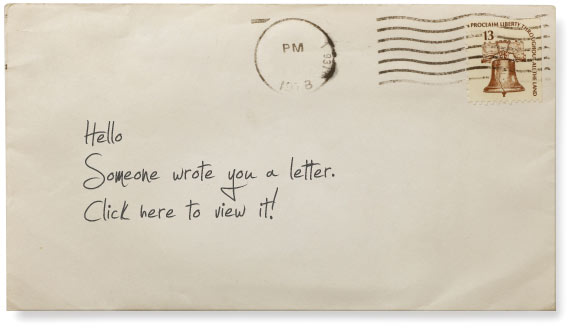|
Canadian
Kevin Goes Customary
A WebQuest
for 6th Grade (Mathematics)
Designed
by
Jennifer Jo
Ferrell
jferrel6@masonlive.gmu.edu

Introduction
| Task
| Process
| Evaluation
| Conclusion | Teacher
Page
Introduction
The
Task
Canadian Kevin really needs your help. Before his journey across
the border in June, he needs to know how to properly convert between
the metric and U.S. Customary systems of measurement. Below is a
list of things he will need or might want to know:
- About how many centimeters are in an inch and a foot (12
inches)? (You may want to let him know we don't use our actual feet to
measure.)
- For when you introduce him to American football, how long
is a meter in inches and how does that compare to a yard?
- If he travels 1 mile, approximately how many kilometers is
that?
- Roughly, how many grams are in an ounce of Canadian bacon?
- How many grams does a nickel weigh? (Kevin is a known coin
collector.)
- About how many pounds can he gain eating American cuisine
before he has gained 1 kilogram?
- A quart of ice-cream is about how many liters? (Kevin loves
Rocky Road.)
- Water will freeze on his windshield at what degrees
Fahrenheit equivalent to 0ºC?
- To boil a pot of water for cooking it takes 100ºC. How
many degrees Fahrenheit is that?
- Kevin's normal body temperature is 37ºC? When he uses
a thermometer here to make sure he hasn't caught a cold, what will his
normal body temperature be in degrees Fahrenheit?
- Kevin likes a room temperature of 20°C, what should he
set the thermostat to in Fahrenheit?
To easily convey this information to Kevin, you
will want to create a visual product that shows Canadian Kevin answers
to his questions about reasonable estimates of metric units of measure
in relation to units of measure in the U.S. Customary system and
include picture examples of real-world things that represent those
measurements as per his request. Your product may take the form of a
PowerPoint (this can be printed out as a handout for Kevin since he has
no computer access), a poster, a brochure, or some other visual product
your instructor gives the okay for.
The
Process
Read all
directions before you click.
1. Pick a role and
pair up with someone of the opposite role.
- Role 1 - Mathematician: a professional whose primary area
of study is in the field of mathematics.
- Role 2 - Teacher: a professional who creates, designs, and
provides education to others.
2. Once
you've picked a role to play, as a class, we will access and watch Math Snacks
Overruled.
- Mathematicians will determine why it is important to have a
standard system of measurement and know how to convert between today's
standard measurement systems, the metric system and U.S. Customary
system.
- After you and your mathematician discuss the importance of
a standard system of measurement, you will scribe a short paragraph
about your discussion to include in your visual presentation.
3. Now
that you are well versed in the importance of both the metric and U.S.
Customary system of measurement, you need to answer Kevin's questions
about reasonable estimates of units in both standard systems of
measurement.
- Mathematicians, find and answer all of Canadian Kevin's
questions from the Task and make yourselves a quick reference guide
using the sheet given to you by your instructor and the links provided
below:
- Teachers, find real-world examples of all the units of
measure asked about by Canadian Kevin in the Task and make yourselves a
quick reference guide using the sheet given to you by your instructor
and the links provided below.
4. Are
you ready to teach Canadian Kevin? Let's test your knowledge with
the Metric-Customary Conversions Quiz.
- This test should be taken by both professionals
collaboratively so that each will be ready to use their area of
expertise to create a mathematical lesson for Kevin about measurement.
You can use your quick reference sheet to help you, but you must get a
score of at least 80% (show your instructor) before you can move on to
number 5. DO NOT FORGET TO SHOW YOUR INSTRUCTOR YOUR SCORE!
5. The
final step is to create a PowerPoint, poster, brochure, etc. to send to
Kevin so he can study up for his visit in June. Remember to take time
to address all of Kevin's questions and include a real-world
example/picture with each answer and include an introduction about the
importance of having a standard measurement system. As a reminder, here
are Kevin's questions again (and they are on your quick reference
guide):
- About how many centimeters are in an inch and a foot (12
inches)?
(You may want to let him know we don't use our actual feet to measure.)
- For when you introduce him to American football, how long
is a meter in inches and how does that compare to a yard?
- If he travels 1 mile, approximately how many kilometers is
that?
- Roughly, how many grams are in an ounce of Canadian bacon?
- How many grams does a nickel weigh? (Kevin is a known coin
collector.)
- About how many pounds can he gain eating American cuisine
before he has gained 1 kilogram?
- A quart of ice-cream is about how many liters? (Kevin loves
Rocky Road.)
- Water will freeze on his windshield at what degrees
Fahrenheit equivalent to 0ºC?
- To boil a pot of water for cooking it takes 100ºC. How
many degrees Fahrenheit is that?
- Kevin's normal body temperature is 37ºC? When he uses
a
thermometer here to make sure he hasn't caught a cold, what will his
normal body temperature be in degrees Fahrenheit?
- Kevin likes a room temperature of 20°C, what should he
set the thermostat to in Fahrenheit?
Evaluation
The following rubric will
be used to evaluate this WebQuest as a grade.
|
|
Beginning
1
|
Developing
2
|
Accomplished
3
|
Exemplary
4
|
|
Standard
Measurement Systems
|
Students
show little or no understanding
of importance of a standard measurement system.
|
Students
show examples of importance of
a standard measurement system.
|
Students
show understanding
of importance of a standard measurement system.
|
Students
show understanding and
examples of importance of a standard measurement system.
|
|
Reasonable
Estimates of Conversions
|
Students
complete Metric - Customary Conversions Quiz with a grade of 60 or below.
|
Students complete Metric -
Customary Conversions Quiz with a grade of 70 to 79.
|
Students complete Metric -
Customary Conversions Quiz with a grade of 80 to 89.
|
Students complete Metric -
Customary Conversions Quiz with a grade of 90 or above.
|
|
Quick
Reference Guide
|
Students did not complete Quick Reference
Guide or partially completed with many errors.
|
Students partially completed Quick Reference
Guide or completed with many errors.
|
Students completed Quick Reference Guide with
few errors.
|
Students
completed Quick
Reference Guide with no errors.
|
|
Product
Detail and Effectiveness
|
Product
is incomplete and/or has no proper answers and pictures.
|
Product
is incomplete, but items present are proper answers and pictures.
|
Product
is complete and includes some proper answers and pictures.
|
Product
is complete and includes proper answers and pictures.
|
|
Collaboration
|
Partners
did not show respect or collaborate efficiently.
|
Partners
showed respect for one another.
|
Partners
showed respect for one another and shared ideas.
|
Partners
showed repect for one another, shared ideas, and completed assigned
role.
|
Conclusion
Canadian Kevin will
successfully learn the U.S. Customary system of measurement and be able
to visit his long time PenPal because of your team efforts as a
mathematician and a teacher. As a group you have successfully learned
to make reasonable estimates of what measurements mean in relation to
other units of measure and relate those units to real-world examples.
You will be able to take this knowledge and appoximate measurements of
length, weight, volume, and temperature using real-world examples.
Maybe one day, you'll even pay Canadian Kevin a visit to his homeland.
Until then, look out because Kevin is...

|




